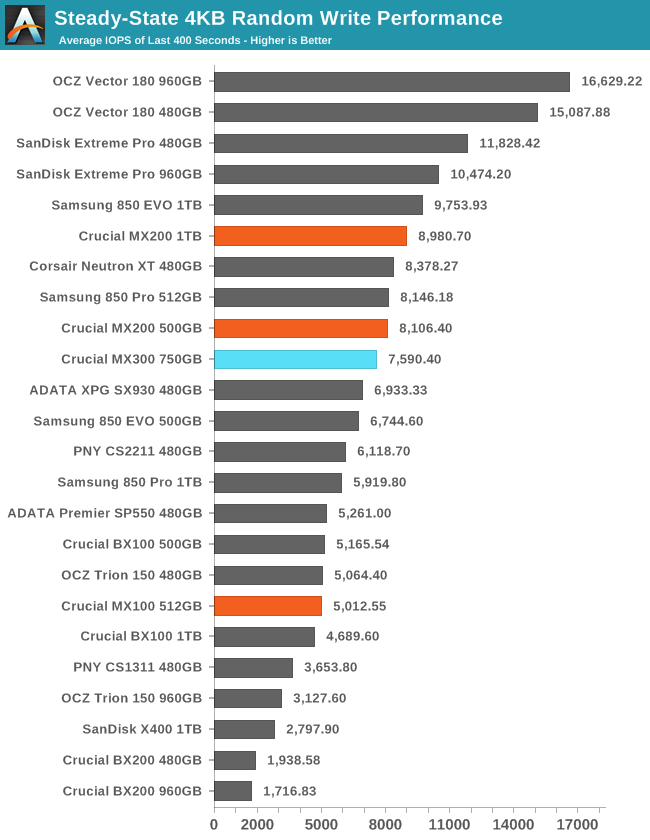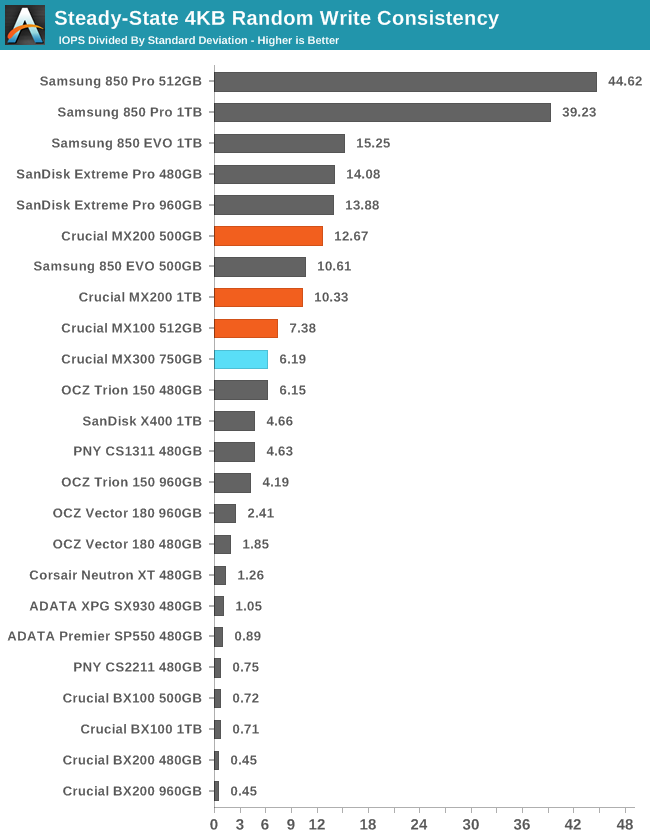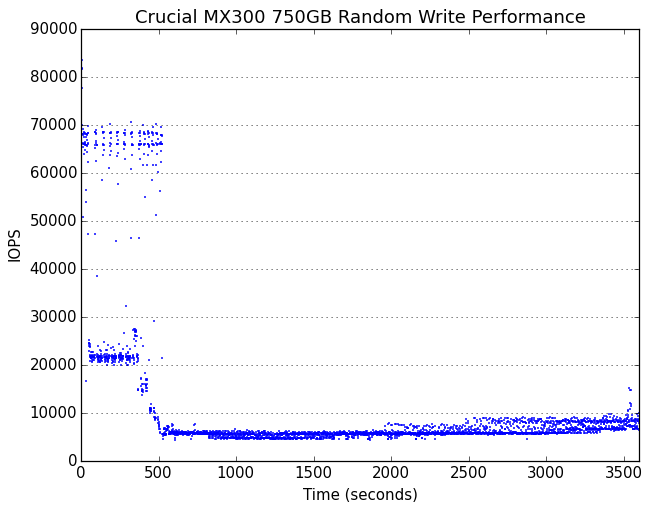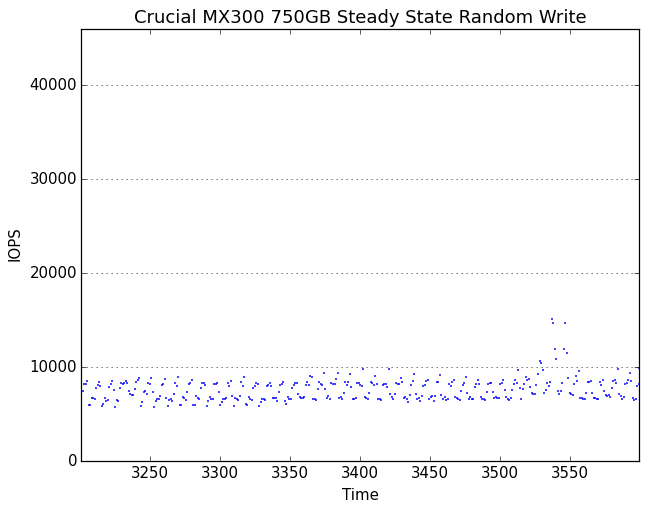The Crucial MX300 750GB SSD Review: Micron's 3D NAND Arrives
by Billy Tallis on June 14, 2016 9:00 AM ESTPerformance Consistency
Our performance consistency test explores the extent to which a drive can reliably sustain performance during a long-duration random write test. Specifications for consumer drives typically list peak performance numbers only attainable in ideal conditions. The performance in a worst-case scenario can be drastically different as over the course of a long test drives can run out of spare area, have to start performing garbage collection, and sometimes even reach power or thermal limits.
In addition to an overall decline in performance, a long test can show patterns in how performance varies on shorter timescales. Some drives will exhibit very little variance in performance from second to second, while others will show massive drops in performance during each garbage collection cycle but otherwise maintain good performance, and others show constantly wide variance. If a drive periodically slows to hard drive levels of performance, it may feel slow to use even if its overall average performance is very high.
To maximally stress the drive's controller and force it to perform garbage collection and wear leveling, this test conducts 4kB random writes with a queue depth of 32. The drive is filled before the start of the test, and the test duration is one hour. Any spare area will be exhausted early in the test and by the end of the hour even the largest drives with the most overprovisioning will have reached a steady state. We use the last 400 seconds of the test to score the drive both on steady-state average writes per second and on its performance divided by the standard deviation.

The MX300's steady state random write performance is below the MX200 but stays slightly ahead of the 850 EVO and well ahead of any planar TLC drive.

The MX300 earns a consistency score that is below the MX200 but about average, and certainly high enough for ordinary consumer workloads.
 |
|||||||||
| Default | |||||||||
| 25% Over-Provisioning | |||||||||
The MX300 lasts for over eight minutes before the SLC cache and spare area are completely exhausted, but during that phase it alternates between operating at about 22k IOPS and 65-70k IOPS. During the steady state phase there is gradual improvement in performance along with an increase in variability.
 |
|||||||||
| Default | |||||||||
| 25% Over-Provisioning | |||||||||
The steady state random write performance of the MX300 varies periodically between about 6k IOPS to 10k IOPS, with no outliers of slow performance. With extra overprovisioning performance is substantially higher and consistency is a bit better.










85 Comments
View All Comments
redzo - Tuesday, June 14, 2016 - link
They are 2 years late. Two freaking years. Intel's holy grail hybrid disruptive memory tech is going to compete at $/gb with traditional ram + stupidly cheaper samsung 3d nand.ratbaby - Tuesday, June 14, 2016 - link
Intel is working to Micron to produce xsp.TheCurve - Tuesday, June 14, 2016 - link
I always look forward to your stuff, Billy. Nice job and thanks for the hard work!AndrewJacksonZA - Wednesday, June 15, 2016 - link
In the last chart, "SSD Price Comparison (Sorted by Price/GB of Highest Capacity Drive,)" you have the heading as "750TB" As that price, for 750TB, I'll take as many as they can produce!!! :-)Lazlo Panaflex - Wednesday, June 15, 2016 - link
SanDisk ultra II 960GB is on sale for $230 @ the Egg. http://www.newegg.com/Product/Product.aspx?Item=N8...Seems like a pretty good deal.
sunshine - Wednesday, June 15, 2016 - link
$219.70 at Amazon: https://www.amazon.com/SanDisk-Ultra-2-5-Inch-Heig...Lazlo Panaflex - Wednesday, June 15, 2016 - link
nice :)euskalzabe - Sunday, June 19, 2016 - link
OCZ Trion 150 960GB is at $199 at this point.DeepLake - Wednesday, June 15, 2016 - link
How did 512GB Samsung EVO got such a jump since 2014?Adam-James - Wednesday, June 15, 2016 - link
Putting out a new SSD in 2016 and saddling it with SATA III is utterly unacceptable. If you want to make an entry level SSD, you should be using SATA Express. For anything else U.2 or M.2 (and not SATA over M.2, actual NVMe M.2). At this point I think the onus is on journalists and consumers to ignore any manufacturer who tries to sell a new SATA III product. Otherwise the industry is just going to continue spinning its wheels.